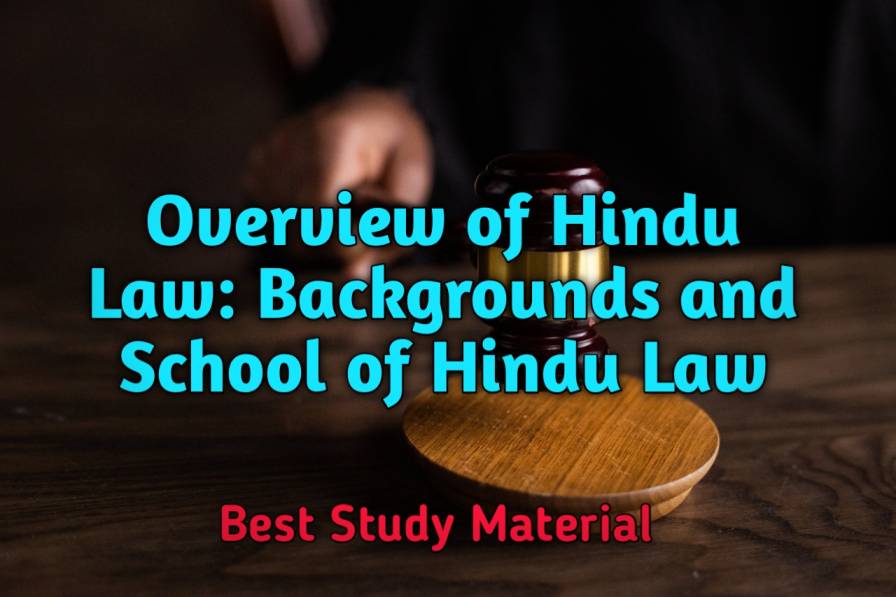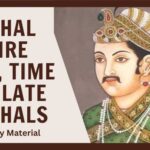Hindu law is considered to be one of the most ancient and deeply rooted in the world. It has been established by the people, not for the purpose of removing crime but it was established so that the people will follow to attain salvation. Hindu law is a body of principle or rules called Dharma (which is believed to have originated from God itself).
Origin of Hindu Law
The word Hindu is not only indicating the religion but also represent the nation. Hindu law has been modified through centuries and it has been existing since 5000 years or more. Also it used to govern the social and moral values of Hindu life with harmonizing the diverse element of Hindu cultural life. As according to Dharma shastra, their are mainly 4 goals of Hindu Life that is Artha, Dharma, Karma and Moksha.
Source of Hindu Law
Their are 2 main source of Hindu law that is Ancient source and Modern source. Ancient Source is further classified into Shruti (Vedas), Smritis, Commentaries & Digests and Customs. Modern Source is further classified into Precedents (Judicial Decision), Legislation and Principle of Equity Justice and Good conscience.
Ancient Source
The ancient hindu literature was considered to be the only source of law in those times, before the codification of Hindu law. They developed the concept of Hindu law. This is also further classified into four categories.
- Shruti: Shruti means ‘What is heard’. It contain the sacred words of the god. Shrutis are the sacred pure utterance written in Vedas & Upanishads. Thus shruti include four Vedas : Rig, Yajura, Sam and Athrava. Considered a primitive source containing knowledge of law.
- Smritis: Smritis mean ‘What is remembered’ and then interpreted by rishi munis through out generations. It has been further classified into Dharma Sutras (Written in Prose), Dharma Shastras (Written in Poem format), Manusmriti (Earliest), Narada Smriti and Yajnavalkya Smriti.
- Commentaries and Digest: They helped in the interpretation of Smritis. Their single interpretation is known as commentaries and digest were explained material from different smritis. Dayabhaga and Mitakshara are the examples of Digest.
- Customs: It is the tradition that had been practiced in the society since ancient times. The continuous observation of people and has been followed by the people from the long time.
Essential Characteristics of a Custom
- Custom must be continuous in practice
- Not be Vague or ambigious
- Should be certain and clear
- Ancient
- Reasonable
- Not against morality
- Must not oppose the public policy
- Not against any law
Modern Source
- Precedents: Judicial decision are considered to be most important ingredient of modern source. They are authoritative and binding on the people.
- Equity, Justice and Good Conscience: When a court use legislation or precedent but still unable to find any relevant answer they judicially opted for Equity, Justice and Good Conscience with relevant reason. It is the basic rule of law. In a case called Gurunath vs. Kamlabai, Supreme court held that in the absence of any existing law, this rule of Equity, Justice and good conscience was applied. This is the most fairest and reasonable option.
- Legislation: It is the most important source of Hindu law. It means law made by state legislature or parliament.
Here are some modern source of Hindu law codified by legislature:
- Hindu Marriage Act, 1955
- Hindu Succession Act, 1956
- Hindu Adoption and Maintenance Act, 1956
- Hindu Disposal Property Act, 1916
- Hindu Minority and Guardianship, 1956
Schools of Hindu law
- Due to the emergence of various commentaries on smritis and shruti, different schools of thought arose.
- Commentary in one part of the country varied from the commentary in other parts.
- School means rules and principle of Hindu law which are divided into two options that is Mitakshara and Dayabhaga.
Mitakshara School
- Mitakshara school exists throughout India except in Bengal and Assam (some parts).
- The ‘Yajna Valkya Smritis’ was commented on by Vijnaneshwara under the title of Mitakshara.
- The follower of Mitakshara are grouped together under Mitakshara school.
- Vijnaneshwara was a great thinker and a law maker from Gulbarga, Karnataka.
- In this, Inheritance is based on the principle of propinquity (Nearest in blood relationship will get the property).
Sub School under Mitakshara School
- Dravidian School (Madras school): Exist in south India.
- Maharashtra School (Bombay school): Exist in Mumbai and Gujarat. It has get an entire work of religious and civil law.
- Banaras School: It extends of whole of Northern India except Punjab where its authority is modified by customary law in rural area.
- Mithila School: Exist in Tirhut, North Bihar and Uttar Pradesh near Jamuna (Yamuna) river areas.
- Punjab School: Prevail in some parts of East Punjab. Punjab School is chiefly regulated by local rural customs and continuous practices.
Dayabhaga School
- It exists in Bengal and some parts of Assam only.
- The ‘Yajnavalkya Smriti’ and some other smritis are commented on by Jimutavahana under the title Dayabhaga.
- It has no Sub-school.
- The process of inheritance among Dayabhaga followers is primarily based on the principle of spiritual benefit.
Main features of Dayabhaga School
- Sapinda relation is by Pinda Offerings ( Rice ball offering to decrease ancestor).
- Right to Hindu joint property is not by birth but on the death of father.
- Widow has a right to succeed to husband’s share and enforce partition (if no male descendant).
Read More: Introduction to Hindu Marriage Act.







1 thought on “Overview of Hindu Law: Backgrounds and Schools of Hindu Law | Unit 1 BALLB Notes.”